Exhibition information
In honour of Dirk Reinartz (1947-2004)
A series of 7 exhibitons
November 10 - December 9, 2006
Bismarck
Bismarck in America
December 13, 2006 – January 13, 2007
Deutschland durch die Bank
Besonderes Kennzeichen: Deutsch
April 20 - May 19, 2007
Kein schöner Land
Innere Angelegenheiten
May 23 - June 27, 2007
Portraits
Künstlerportraits
September 15 - October 13, 2007
New York, 1974
October 17 - November 24, 2007
Richard Serra – Skulpturen
November 30, 2007 – January 27, 2008
totenstill
The exhibition “Dirk Reinartz. Bismarck – Bismarck in America” in the photography gallery at Galerie m Bochum kicks off an extensive series of exhibits dedicated to the work of photographer Dirk Reinartz.
As photographer/author, Reinartz published several books with Steidl Verlag, photographs from which Galerie m Bochum will now be displaying in individual shows. Reinartz rose to international prominence with a chilling cycle of photographs of former concentration camps, under the title “deathly still.” An exhibition of selected works from this imposing series, which also wraps up the schedule of shows in Reinartz’ honor, will end on January 27, 2008 – the anniversary of the day Auschwitz was liberated.
Born in 1947 in Aachen (d. 2004), Dirk Reinartz first studied photography under Otto Steinert at the Folkwang School in Essen, before launching his career in 1971 as the youngest photographic reporter at Stern magazine.
In 1977 he joined the photographers’ collective VISUM, which he left again in 1982 in order to work independently. His work revolved mainly around social themes as well as portraits of artists, and was published in all of the major magazines, including Life, Der Spiegel, SZ-Magazin, Zeit-Magazin and Art.
Reinartz began compiling his photographs into books in 1985 and published several volumes of work. A key focus of his photographic oeuvre was an exploration of Germany in its many facets. His work with Richard Serra, whose worldwide sculptural projects he documented, resulted in several impressive books on Serra’s work. In his final years, Reinartz taught photography at the Muthesius University in Kiel.
Bismarck (1989-1991)
Otto von Bismarck dominates the public realm in Germany like no other statesman. Almost every city boasts a monument to the unifier of Germany, usually over life-size and placed prominently in the city center, most of which were erected in the 19th century. In the meantime, these cityscapes have undergone fundamental transformations. Dirk Reinartz succeeds in subtly conveying the interplay between each monument and its surroundings. In some towns, these testaments to Germany’s past seem out of place, even ludicrous. This disjuncture often results in an alienation of the object, the loss of its meaning as symbol in today’s consciousness. In this sense, these photographs can serve as a springboard for reflecting on how we handle our cultural heritage in the public space.
Bismarck in America (1998)
Numerous streets and public buildings have been named after Otto von Bismarck. This includes a city in the northwestern USA, which Dirk Reinartz noticed on weather maps shown on American TV. Reinartz used the occasion of the 100th anniversary of Otto von Bismarck’s death to visit and photograph the city that bears his name, accompanied by author Wolfram Runkel. The resulting photos, published in 2000 in a book titled Bismarck in America, show a typical American small town in which there is no monument to the Prussian politician, but where his name is omnipresent. Dirk Reinartz does without any spectacular motifs or artificially staged tableaux, approaching his subject instead with the attitude of a curious passer-by, patiently exploring his surroundings. With his carefully selected framing of the image and the order imposed on each composition, Reinartz manages to capture the essence of this American town in an inimitable fashion. Beyond this, it is the eye-catching details within the overall picture that make for the special appeal of this series.
Kein schöner Land The photographs in the series Kein schöner Land were taken from 1978 to 1987. In the book of the same name, published in 1989, Norbert Klugmann describes the “public devastation of the Federal Republic of Germany,” which bestows on us the “view of desolate houses and gardens” and that we can only bear because we have learned to simply ignore it. This “cold, brutal architectural anti-culture” is omnipresent in the black-and-white photographs of Dirk Reinartz. He documents here an evident “fear of the anarchy of green foliage” marked by urban development measures that seem to arise from a deep-seated need for control and order.
Innere Angelegenheiten This stocktaking, which Reinartz continued later in color in his series Innere Angelegenheiten (1989-2002), offers us new insights into the world around us while also taking a clear stand on the situation. Reinartz saw his photography as a tool and medium for reflecting on reality.
Besonderes Kennzeichen: Deutsch (um 1980)
The photo book Besonderes Kennzeichen: Deutsch was published in 1990. On display at Galerie m are photographs from the report Von Tür zu Tür im Hochhaus. Porträt eines Wohnbunkers, a very personal exploration of subsidized housing on the outskirts of a big German city.
Deutschland durch die Bank (1992-1996)
Deutschland durch die Bank is a sometimes bizarre and whimsical look at the culture of public sitting in Germany. Just as in his other projects, Reinartz manages with his photographs of benches and other seating options to sharpen our awareness of an object that we otherwise take for granted as part of our everyday world.
Portraits I Artist Portraits
Dirk Reinartz took pictures of many artists during the 1980s and early 90s. He succeeded at creating vivid portraits that capture the person and his or her work at once earnestly, sensitively and with humor. With his attentive yet casual manner, Reinartz summoned moments of closeness with his sitters. Artists such as Joseph Beuys, Hans Hartung, Emil Schumacher or Meret Oppenheim are shown in intimate close-ups, gazing confidently into the camera while still preserving their secrets.
The photographs were commissioned by Art magazine. The first book, with 114 Artist Portraits, was published in 1992 by Steidl Verlag.
New York, 1974
The vintage prints made from photographs the artist took on two private trips to New York in 1974, can now be enjoyed as a full series. Back then, the 27-year-old was the youngest photo reporter working for Stern magazine. Dirk Reinartz’ keen feel for the rhythm and architecture of Manhattan, his humorous and yet incisive focus on the people of the city, his understanding for both the comic and tragic aspects of city life, create a multifaceted, fascinating view of New York in the early 1970s.
Reinartz had the ability both to capture the city’s overwhelming architecture with its skyscrapers rising up to create deep canyons and its many construction sights as well as to focus in on small details in the streets and neighborhoods and the people inhabiting them – placing him squarely in the best tradition of “street photography.” In this series, Reinartz succeeds at capturing the mood of the American populace in the 1970s, an era shaped by the oil crisis, the Vietnam War and resulting recession, rising unemployment and political scandals.
Richard Serra – Sculptures
With this exhibition, Galerie m would like to draw viewers’ attention to the longstanding collaboration between artists Dirk Reinartz and Richard Serra. The meeting between the photographer and sculptor in 1983 soon gave rise to mutual admiration. Reinartz began traveling all over the world to photograph Serra’s landscape installations and public sculptures, an activity he pursued until his untimely death in 2004. The fascinating black-and-white photographs became the basis for sculpture books that Reinartz compiled in close cooperation with Serra, for example “Afangar,” 1991, “La Mormaire,” 1997 and “Lemgo Vectors,” 1998. For the catalogue raisonnée “Sculpture 1985-1998,” Reinartz spent long years journeying to far-flung sculptural installations across the globe in order to document them for this publication, today long since out of print.
Richard Serra described this in a conversation with Lynn Cook on the occasion of his retrospective in summer 2007 at the MOMA New York as follows: „Photography is an extension of my eye. Dirk Reinartz became an eye for me. We travelled together a lot and I miss working with him.“
deathly still
In 1994 Reinartz published the photo-documentary deathly still, a pictorial analysis of the Holocaust that evokes memories of that tragic era while prompting reflection on present-day conditions. He took the photographs over a period of eight years in 26 former German concentration and death camps. In observing these images of what the sites look like today, our sense of alienation comes not so much from the immediate immanence of the motifs themselves, but rather from the ordinariness and apparent meaninglessness of woods, fields, roads and overgrown walls that were once mute witnesses to unspeakable horrors. Our sense of unease comes from knowing that these scenes were photographed in concentration camps, with all the associations thus evoked.
November 10 - December 9, 2006
Bismarck
Bismarck in America
December 13, 2006 – January 13, 2007
Deutschland durch die Bank
Besonderes Kennzeichen: Deutsch
April 20 - May 19, 2007
Kein schöner Land
Innere Angelegenheiten
May 23 - June 27, 2007
Portraits
Künstlerportraits
September 15 - October 13, 2007
New York, 1974
October 17 - November 24, 2007
Richard Serra – Skulpturen
November 30, 2007 – January 27, 2008
totenstill
The exhibition “Dirk Reinartz. Bismarck – Bismarck in America” in the photography gallery at Galerie m Bochum kicks off an extensive series of exhibits dedicated to the work of photographer Dirk Reinartz.
As photographer/author, Reinartz published several books with Steidl Verlag, photographs from which Galerie m Bochum will now be displaying in individual shows. Reinartz rose to international prominence with a chilling cycle of photographs of former concentration camps, under the title “deathly still.” An exhibition of selected works from this imposing series, which also wraps up the schedule of shows in Reinartz’ honor, will end on January 27, 2008 – the anniversary of the day Auschwitz was liberated.
Born in 1947 in Aachen (d. 2004), Dirk Reinartz first studied photography under Otto Steinert at the Folkwang School in Essen, before launching his career in 1971 as the youngest photographic reporter at Stern magazine.
In 1977 he joined the photographers’ collective VISUM, which he left again in 1982 in order to work independently. His work revolved mainly around social themes as well as portraits of artists, and was published in all of the major magazines, including Life, Der Spiegel, SZ-Magazin, Zeit-Magazin and Art.
Reinartz began compiling his photographs into books in 1985 and published several volumes of work. A key focus of his photographic oeuvre was an exploration of Germany in its many facets. His work with Richard Serra, whose worldwide sculptural projects he documented, resulted in several impressive books on Serra’s work. In his final years, Reinartz taught photography at the Muthesius University in Kiel.
Bismarck (1989-1991)
Otto von Bismarck dominates the public realm in Germany like no other statesman. Almost every city boasts a monument to the unifier of Germany, usually over life-size and placed prominently in the city center, most of which were erected in the 19th century. In the meantime, these cityscapes have undergone fundamental transformations. Dirk Reinartz succeeds in subtly conveying the interplay between each monument and its surroundings. In some towns, these testaments to Germany’s past seem out of place, even ludicrous. This disjuncture often results in an alienation of the object, the loss of its meaning as symbol in today’s consciousness. In this sense, these photographs can serve as a springboard for reflecting on how we handle our cultural heritage in the public space.
Bismarck in America (1998)
Numerous streets and public buildings have been named after Otto von Bismarck. This includes a city in the northwestern USA, which Dirk Reinartz noticed on weather maps shown on American TV. Reinartz used the occasion of the 100th anniversary of Otto von Bismarck’s death to visit and photograph the city that bears his name, accompanied by author Wolfram Runkel. The resulting photos, published in 2000 in a book titled Bismarck in America, show a typical American small town in which there is no monument to the Prussian politician, but where his name is omnipresent. Dirk Reinartz does without any spectacular motifs or artificially staged tableaux, approaching his subject instead with the attitude of a curious passer-by, patiently exploring his surroundings. With his carefully selected framing of the image and the order imposed on each composition, Reinartz manages to capture the essence of this American town in an inimitable fashion. Beyond this, it is the eye-catching details within the overall picture that make for the special appeal of this series.
Kein schöner Land The photographs in the series Kein schöner Land were taken from 1978 to 1987. In the book of the same name, published in 1989, Norbert Klugmann describes the “public devastation of the Federal Republic of Germany,” which bestows on us the “view of desolate houses and gardens” and that we can only bear because we have learned to simply ignore it. This “cold, brutal architectural anti-culture” is omnipresent in the black-and-white photographs of Dirk Reinartz. He documents here an evident “fear of the anarchy of green foliage” marked by urban development measures that seem to arise from a deep-seated need for control and order.
Innere Angelegenheiten This stocktaking, which Reinartz continued later in color in his series Innere Angelegenheiten (1989-2002), offers us new insights into the world around us while also taking a clear stand on the situation. Reinartz saw his photography as a tool and medium for reflecting on reality.
Besonderes Kennzeichen: Deutsch (um 1980)
The photo book Besonderes Kennzeichen: Deutsch was published in 1990. On display at Galerie m are photographs from the report Von Tür zu Tür im Hochhaus. Porträt eines Wohnbunkers, a very personal exploration of subsidized housing on the outskirts of a big German city.
Deutschland durch die Bank (1992-1996)
Deutschland durch die Bank is a sometimes bizarre and whimsical look at the culture of public sitting in Germany. Just as in his other projects, Reinartz manages with his photographs of benches and other seating options to sharpen our awareness of an object that we otherwise take for granted as part of our everyday world.
Portraits I Artist Portraits
Dirk Reinartz took pictures of many artists during the 1980s and early 90s. He succeeded at creating vivid portraits that capture the person and his or her work at once earnestly, sensitively and with humor. With his attentive yet casual manner, Reinartz summoned moments of closeness with his sitters. Artists such as Joseph Beuys, Hans Hartung, Emil Schumacher or Meret Oppenheim are shown in intimate close-ups, gazing confidently into the camera while still preserving their secrets.
The photographs were commissioned by Art magazine. The first book, with 114 Artist Portraits, was published in 1992 by Steidl Verlag.
New York, 1974
The vintage prints made from photographs the artist took on two private trips to New York in 1974, can now be enjoyed as a full series. Back then, the 27-year-old was the youngest photo reporter working for Stern magazine. Dirk Reinartz’ keen feel for the rhythm and architecture of Manhattan, his humorous and yet incisive focus on the people of the city, his understanding for both the comic and tragic aspects of city life, create a multifaceted, fascinating view of New York in the early 1970s.
Reinartz had the ability both to capture the city’s overwhelming architecture with its skyscrapers rising up to create deep canyons and its many construction sights as well as to focus in on small details in the streets and neighborhoods and the people inhabiting them – placing him squarely in the best tradition of “street photography.” In this series, Reinartz succeeds at capturing the mood of the American populace in the 1970s, an era shaped by the oil crisis, the Vietnam War and resulting recession, rising unemployment and political scandals.
Richard Serra – Sculptures
With this exhibition, Galerie m would like to draw viewers’ attention to the longstanding collaboration between artists Dirk Reinartz and Richard Serra. The meeting between the photographer and sculptor in 1983 soon gave rise to mutual admiration. Reinartz began traveling all over the world to photograph Serra’s landscape installations and public sculptures, an activity he pursued until his untimely death in 2004. The fascinating black-and-white photographs became the basis for sculpture books that Reinartz compiled in close cooperation with Serra, for example “Afangar,” 1991, “La Mormaire,” 1997 and “Lemgo Vectors,” 1998. For the catalogue raisonnée “Sculpture 1985-1998,” Reinartz spent long years journeying to far-flung sculptural installations across the globe in order to document them for this publication, today long since out of print.
Richard Serra described this in a conversation with Lynn Cook on the occasion of his retrospective in summer 2007 at the MOMA New York as follows: „Photography is an extension of my eye. Dirk Reinartz became an eye for me. We travelled together a lot and I miss working with him.“
deathly still
In 1994 Reinartz published the photo-documentary deathly still, a pictorial analysis of the Holocaust that evokes memories of that tragic era while prompting reflection on present-day conditions. He took the photographs over a period of eight years in 26 former German concentration and death camps. In observing these images of what the sites look like today, our sense of alienation comes not so much from the immediate immanence of the motifs themselves, but rather from the ordinariness and apparent meaninglessness of woods, fields, roads and overgrown walls that were once mute witnesses to unspeakable horrors. Our sense of unease comes from knowing that these scenes were photographed in concentration camps, with all the associations thus evoked.
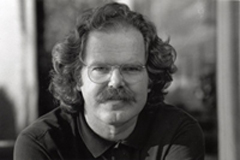
Dirk Reinartz, 2000

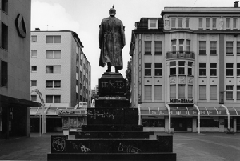
Wuppertal, Bismarck, 1991
aus: Bismarck
aus: Bismarck

Welcome to Bismarck, 1998
aus: Bismarck in America
aus: Bismarck in America
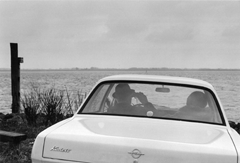
Elbufer Grünendeich, 1979
aus: Kein schöner Land
aus: Kein schöner Land
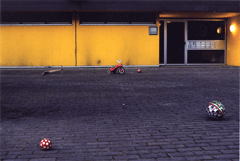
o.T., 1989-2002
aus: Innere Angelegenheiten
aus: Innere Angelegenheiten

Klingelbrett, Hochhaus, Hamburg 1981
aus: Besonderes Kennzeichen:Deutsch
aus: Besonderes Kennzeichen:Deutsch
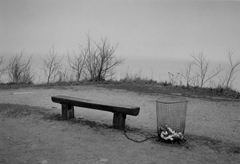
Brodten, Ostsee 1992/96
aus: Deutschland durch die Bank
aus: Deutschland durch die Bank
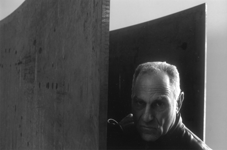
Richard Serra
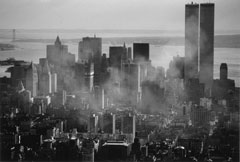
New York, 1974
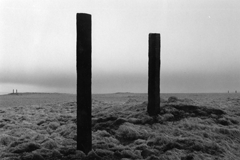
Afangar, 1991
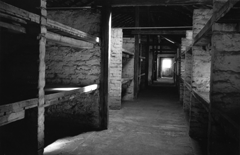
Auschwitz II/Birkenau, Innenraum einer Ziegelbaracke, 1993
